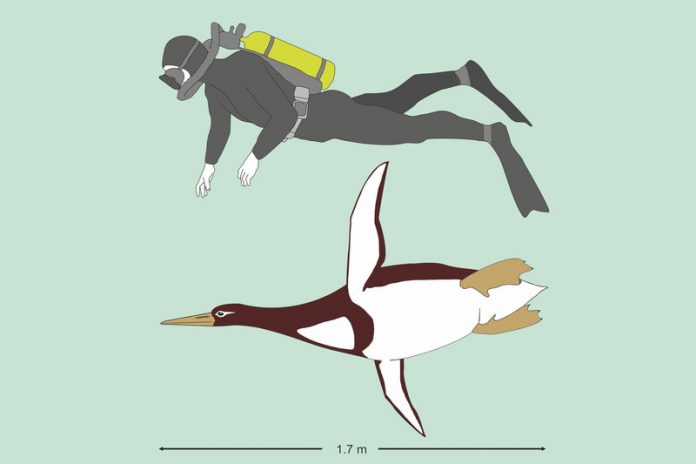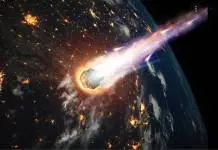
Penguins as tall as adult men, and heavier than most people, once inhabited New Zealand and swam on its waters. The discovery of Kumimanu biceae fossils on the island coasts reveals traces of an ancient past in which marine birds evolved quickly and were part of the upper food chain.
Researchers led by Professor Gerald Mayr published on Tuesday the findings of their investigation in the journal Nature Communications. The species is believed to have lived in the icy lands approximately 55 to 60 million years ago during the Paleocene era.
Standing at roughly 5 feet and 10 inches while swimming, it is one of the largest species of prehistoric penguin ever found, and the important preservation of an almost complete specimen has helped scientists to clear out some doubts about the evolution of penguins.
Ice breaker: Fossils from New Zealand reveal a giant penguin that was about the size of a grown man. In fact, it was about as big as Sidney Crosby, captain of the Pittsburgh Penguins. https://t.co/0crzwv29mz #odd
— AP Oddities (@AP_Oddities) December 12, 2017
Kumimanu biceae might be the largest penguin ever
Kuminmanu biceae gets its name from Maori, and it translates roughly to “monster bird.” The second word, though, is also in honor of one of the researchers’ mothers, Bice Tennyson, who fostered Alan Tennyson’s interest in natural history.
“Monster” might be appropriate for the colossal penguin, as not only it measured the same as an adult man, but also probably weighed more than one. Estimates placed the weight of the bird at 223 pounds or 100 kg.
In contrast, the Emperor penguin is just around 4 feet and weighs around a fifth of the speculated weight of its ancestor. The fossilized remains found on the coast of New Zealand gave scientists one of the most complete looks ever at ancient penguins.
Bone fragments of presumably larger species have been found both in New Zealand and Antarctica, but none of those have provided concrete evidence of colossal size like the Kumimanu biceae specimen that was recently found.
Why did penguins shrink with time?
As cool as it might be to think of penguins that can literally stand next to us and look at us eye to eye, it was definitely cooler for large marine mammals that began to develop in the icy waters where massive penguins lived.
Species like the Kumimanu biceae flourished right after the extinction of dinosaurs 66 million years ago. With no reptile predators left to threaten their development and plenty of food in the sea, the birds grew in size and dived deeper in search of prey.
However, they were not the only ones busy evolving. Land mammals also took to the sea, and the first toothed whales and large marine predators began to share territory with the penguins, who were no match for their natural hunting skills and speed underwater.
Source: Nature











